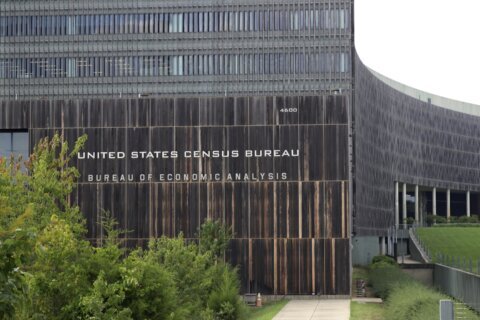These days many of us write few, if any, checks. So, the term “balancing a checkbook” has taken on a new meaning. Simply put, balancing your checkbook involves making sure your records for your checking account match the bank’s records.
For instance, the bank’s records for your checking account may show a $50 debit card purchase at a grocery store, but that transaction doesn’t appear in your own records. In this case, the $50 purchase might have been fraudulent, so balancing your checkbook enables you to detect this transaction and report it to your bank.
Here, we explain why you should balance your checkbook and walk you through the steps for doing it.
[Read: Best Checking Accounts.]
Why You Should Balance Your Checkbook
Balancing your checkbook, also called reconciling your account, may feel like a chore. But it’s a chore that can help you spot fraudulent transactions, find errors and monitor your spending.
Spotting Fraudulent Transactions
Balancing your checkbook allows you to spot potentially fraudulent transactions that the bank may not have noticed. For instance, if a $225 debit card transaction at a clothing store pops up on your account statement, but you’ve never bought any clothing from that store.
After unearthing this potentially fraudulent purchase, you can report it to your bank, which then has 10 business days to investigate the matter. If the bank determines the purchase was fraudulent, it must fix the error in one business day and must report the outcome of its investigation in three business days.
Finding Errors
Another benefit of balancing your checkbook is finding errors. For example, you deposited $1,000 into your account at a bank branch, but the teller mistakenly entered it as a $100 deposit. Discovering this while balancing your checkbook enables you to contact your bank and get the error corrected.
The same approach applies to catching errors that a merchant may have made, such as charging the regular price of $1,500 for a sofa instead of charging the sale price of $1,250.
Monitoring Your Spending
Balancing your checkbook also provides an opportunity to monitor your spending. For instance, a review of your records may make it apparent that you’re overspending on entertainment or racking up a lot of overdraft fees. This knowledge can help you improve your spending behavior.
[Read: Best Online Banks.]
How to Balance Your Checkbook
To balance your checkbook, you’ll compare all of the money going into your account and all of the money going out of your account.
Simply put, you balance your checkbook by looking at whether the figures on your account statement match the figures you’ve recorded.
Here are the steps to take to balance your checkbook.
Keep Track of Transactions
Balancing your checkbook starts with tracking each transaction. You can accomplish this by using the register that comes with your checkbook, plugging numbers into a spreadsheet, relying on a financial app or leaning on your bank’s online capabilities. Whichever method you pick, it’s important to monitor each incoming and outgoing transaction.
To help ensure your tracking is accurate, try to enter each transaction right after it happens, including the date, the dollar amount and a short description. Or hang onto receipts, such as those for online purchases, and enter the information when you can carve out time to do it.
For each check you write, remember to note the check number, date you wrote the check, recipient and dollar amount.
Adjust the Balance
As you go along, add or subtract each transaction to calculate your current balance. So if you deposited $500 at a bank branch, your records should reflect the addition of this money. And if you withdrew $200 at an ATM, your records should reflect the subtraction.
This real-time math can help keep you from overspending or being hit with overdraft fees, as your bank’s tally might not have caught up with all of your most recent transactions.
Review Your Monthly Statement
Regardless of whether it’s in paper or electronic form, always scrutinize each monthly statement to identify math mistakes, unfamiliar transactions and anything else that looks odd. If something stands out as an obvious error, contact your bank to get it corrected.
It’s wise to frequently compare your records — all of the money going into and out of your account — with what shows up when you log into your bank’s online portal or app. This way, you can quickly address any inconsistencies.
[See: Best High-Yield Savings Accounts]
Compare Your Records and Your Bank’s Records
Once you’ve combed through your monthly statement, compare it with what you’ve recorded on your own. Ideally, this should be done no less than once a month.
As you complete the side-by-side review, note each transaction that matches and flag each transaction that doesn’t match. For any transaction that doesn’t match, do some sleuthing to figure out the cause of the mismatch. For instance, you might have forgotten to list an ATM withdrawal. If you’re still puzzled, ask a trusted friend or relative to double-check the numbers. Or contact your financial advisor or your bank to get help.
Keep in mind that some transactions you’ve recorded on your own might not have cleared yet, meaning they weren’t officially completed before the bank issued your monthly statement.
If you’ve detected numbers that don’t align, figure out whether you made a mistake or reach out to your bank to resolve the issue.
Match the Balances
Make sure the final monthly balance on your bank statement matches the final monthly balance in your records. This means that if your bank statement shows your balance stood at $1,250 on July 31, your records presumably should indicate a July 31 balance of $1,250.
If the balances aren’t the same, go through the bank statement and your own records to see why there’s a difference. It could be as simple as a math error on your part or the bank’s part.
Don’t forget that some transactions you’ve recorded might not appear on your bank statement because they haven’t cleared yet.
Digital Alternatives to a Checkbook Register
Chances are that you don’t use the checkbook register that your bank provided. In fact, you may have thrown it out or don’t know where it is. If that sounds like you, then you’ll likely be in the market for a digital alternative. Here are some options:
— Digital assistants such as Bank of America’s Erica, Truist Assist and U.S. Bank’s Smart Assistant.
— PocketGuard budgeting app.
— Quicken Simplifi budgeting app.
— YNAB (You Need a Budget) budgeting app.
— Google Sheets spreadsheets.
— Microsoft Excel spreadsheets.
— Vertex42 budget templates.
More from U.S. News
How to Use an ATM the Right Way
How to Balance a Checkbook originally appeared on usnews.com
Update 11/07/23: This story was published at an earlier date and has been updated with new information.







